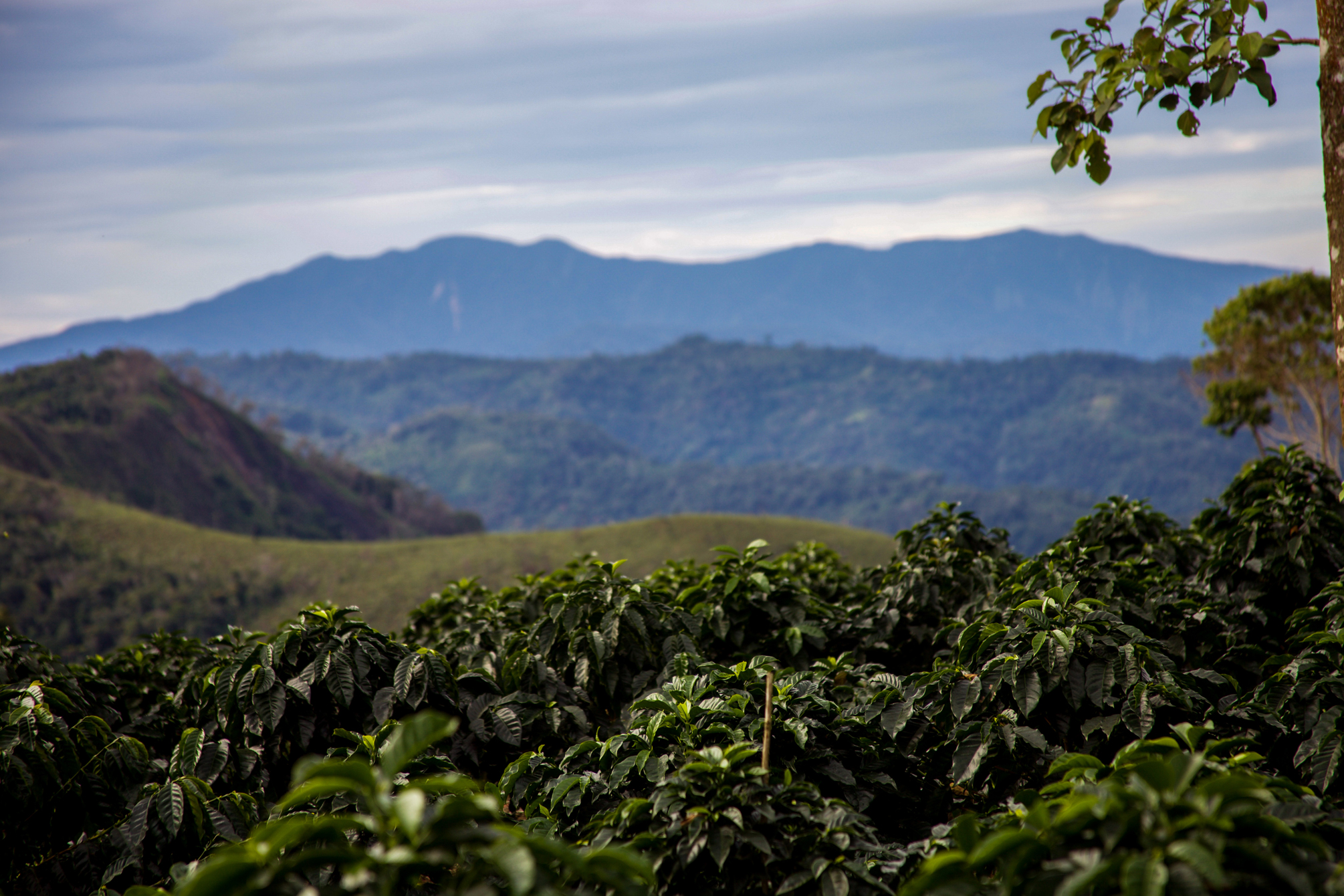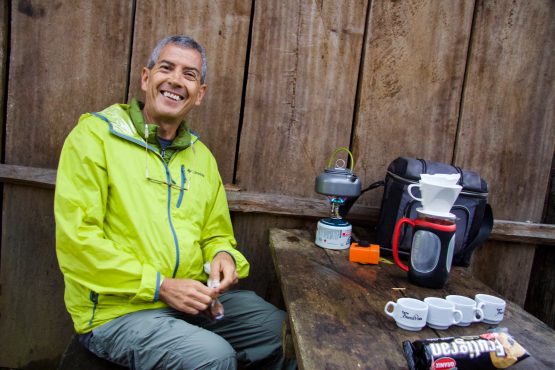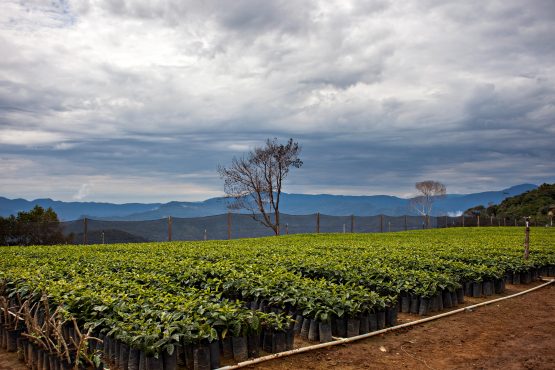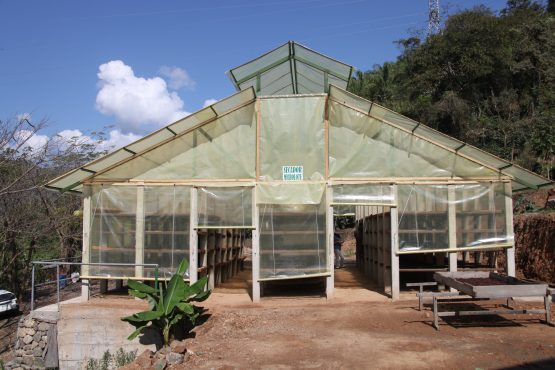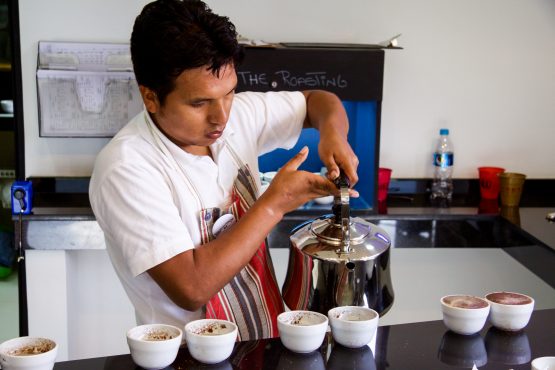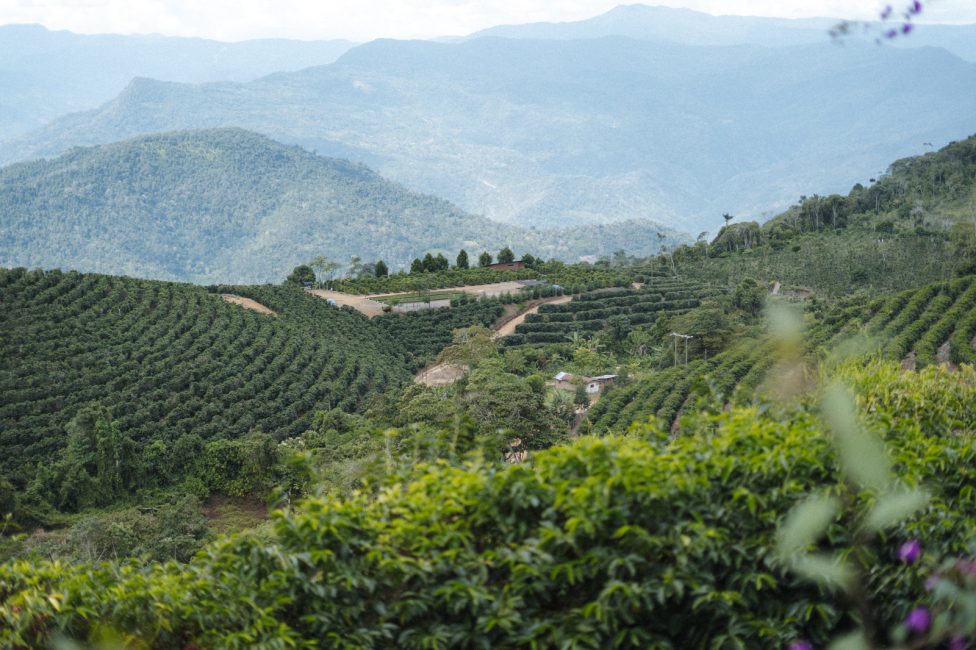La Linda Java Micro-Lot
Complex and elegant with notes of passionfruit, peach, lemon verbena and oolong tea.
This is a tiny and very special micro-lot. When we first cupped this coffee at origin, we assumed from the cup profile that it was a Geisha—it is incredibly floral and fruit-driven, with delicious notes of tropical fruit and an intense sugary sweetness.
This unique coffee is from La Linda, a small farm owned by Pedro Rodriguez. Over the last decade, Rodriguez has worked tirelessly to build the production of, and market for, Bolivian specialty coffee, helping hundreds of local farmers recognise and realise the potential of their land and crops.
La Linda is located in the colony of Bolinda, which lies in a lush, steep mountain valley around 10 kilometres outside of the town of Caranavi. The colony of Bolinda was founded 52 years ago and was once known as ‘Bolivia Linda’ or ‘Beautiful Bolivia’. Over the years this name was shortened to Bolinda, and it is now one of the larger settlements in the area.
Pedro Rodriguez entered the coffee industry 30 years ago, ditching his suit and his accounting job to pursue a passion for agriculture. Fifteen years ago, Pedro recognised the potential for specialty coffee in Bolivia, and over the last decade he has built a visionary business called Agricafe, which focuses on forging long-term relationships with producers, based on mutual trust and benefit.
With a young, dynamic, and passionate team, including Pedro’s son Pedro Pablo and daughter Daniela, Agricafe represents over 1,000 small producers based in the Caranavi province as well as further afield in the South Yungas region. Many of the Caranavi-based producers deliver their whole cherries to Agricafe’s Buena Vista Mill in Caranavi. This meticulously run mill processes many of its lots separately, allowing for full traceability back to the individual farmer or colony.
Over the last five years, many of the producers that Agricafe works with have stopped producing coffee (many farmers have switched to coca—grown for the drug trade—which provides them with a higher year-round income), and this, combined with falling yields for those still in the coffee game (as a result of leaf rust and simple farming practices) has seen coffee production across the nation more than halve.
In 2012, Pedro Rodriguez responded by investing in planting his own farms to guarantee supply and the future sustainability of his business, and to demonstrate to local farmers what can be achieved with the application of modern farming techniques and a scientific approach. Under this project, called ‘Fincas Buena Vista’, Agricafe now has 12 farms, and aims to plant around 200 hectares of coffee in total across them.
La Linda was the first farm that the Rodriguez family planted. It was established in 2012, and its first year of production was in 2015. La Linda is 10 hectares in size, 5.92 of which are coffee. We feel very close to this farm; we were there the first year it was planted and have watched it grow every year since. La Linda’s high altitude—about 1,482 -1,550 metres above sea level—helps to ensure a slow maturation of the cherry because of the stable night-time temperature and mild day temperatures. The slow maturation leads to an increased concentration of sugars in the cherry and bean, which in turns helps to produce a sweeter cup of coffee. At La Linda, Pedro hires pickers from the Bolinda community to carefully hand pick the coffee during the harvest. These pickers are trained to select only the very ripest cherries, and multiple passes are made through the farm throughout the harvest to ensure the coffee is picked at its prime.
Pedro and his family have invested a lot of time and effort into trying to make this a ‘model’ farm that other producers in the area can learn from. Their learnings have also been used to inform how to best plant and manage their future farms. Daniela explains “La Linda was the reason we decided to start producing high quality coffee… we acquired the land as an experiment to see if the company could produce high quality coffee. Starting with our own knowledge and making plenty of mistakes, La Linda has turned into one of our biggest success stories. What we learnt in La Linda has developed and shaped the plans for our future farms and become the base of our Sol de Mañana program”
The coffee at La Linda is meticulously organised by variety and is well spaced in neat rows, making picking much easier to manage than on the more traditional farms in the region. Pedro has trialled several varieties on this farm, including San Bernardo, Caturra, and Java. We cupped all of these varieties separately with the head of Quality Control at Buena Vista, Wilfredo Calles, and this Java micro-lot was by far our favourite, and got us extremely excited!
HOW THIS COFFEE WAS PROCESSED
This very special lot was picked on the 13th of June 2017 and processed on the same day at the Rodriguez family’s Buena Vista Mill. It was pulped and then fermented in very cold water for 22 hours, then graded by weight and washed. The coffee was next dried carefully on raised beds in an open greenhouse with adjustable walls that can be raised to allow maximum ventilation. The shade of the greenhouse provides protection against the sun and ensures that the parchment does not break, allowing the coffee to dry slowly. While drying, the coffee was turned regularly to ensure it dried evenly, and carefully inspected for any defects (often more visible in wet parchment).
Once the coffee was dry, it was transported to La Paz where it was rested, and then milled at the Rodriguez family’s brand new dry mill. There, the coffee was carefully screened again by machines and also by hand.
WANT TO KNOW MORE?
Read about the Sol de la Mañana program here and Pedro Rodgriguez here and about Bolivian coffee more generally here
